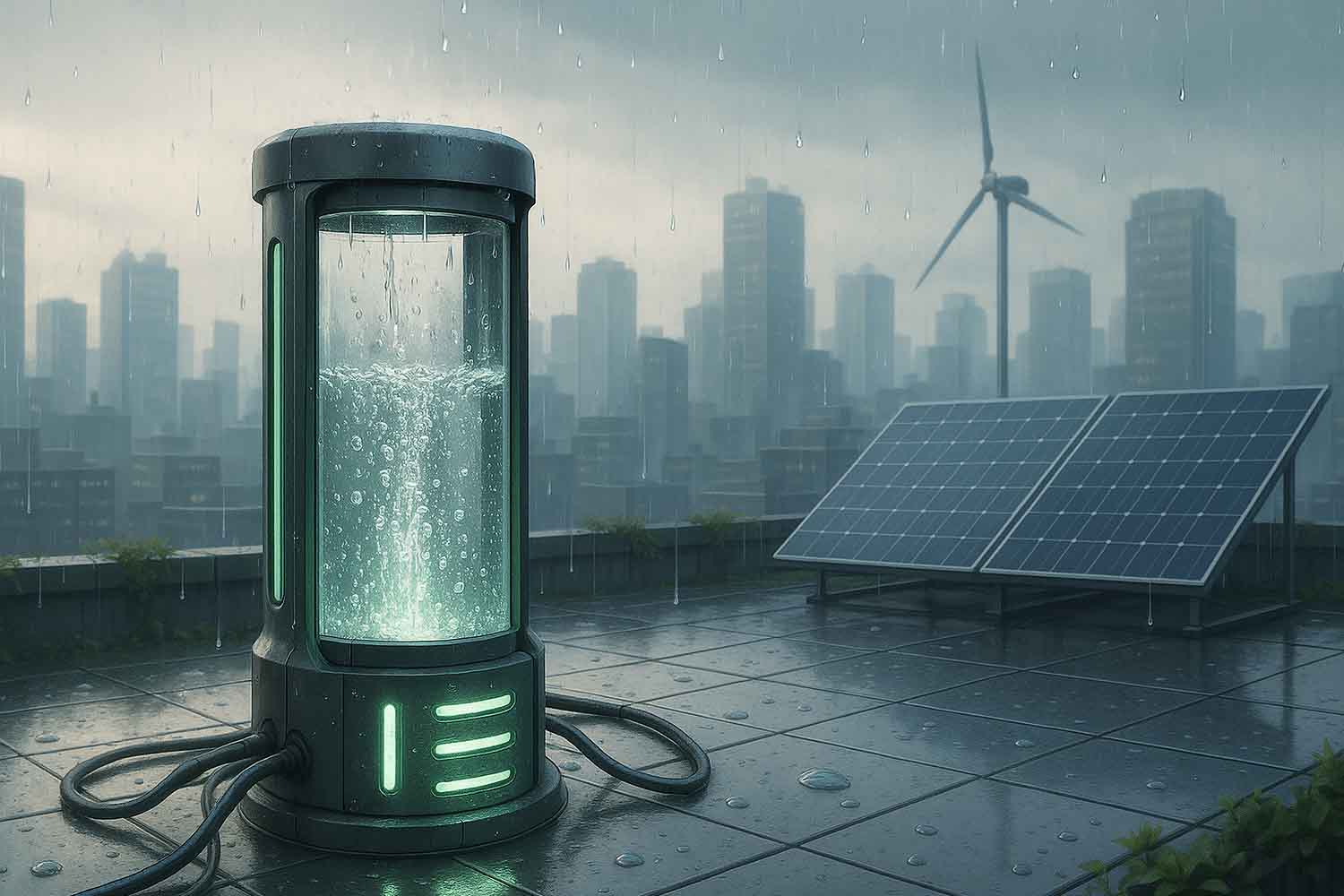Researchers have developed a system that turns raindrops into electricity, offering a new, clean, and accessible energy source, especially for urban areas.

It might seem like something out of a futuristic laboratory, but this is a reality. A team of researchers from the National University of Singapore has developed a system that is as simple as it is revolutionary: transforming raindrops into electrical energy. Inspired by the principle of charge separation between different materials, the mechanism has managed to power 12 LED lights using nothing but water falling through a tube.
By harnessing a phenomenon known as “plug flow,” the scientists have demonstrated how rainwater can become a new source of renewable, easily accessible energy—even in urban areas.
How the system captures electricity from raindrops
At the heart of this project is a simple but powerful idea: when water falls vertically through a tube with conductive walls, an electric charge separation is created. However, the key lies in the way the water flows.
The team built a structure in which water is expelled from a metal needle, forming droplets similar to those of rain. These droplets enter a vertical tube, and upon impact at the tube’s entrance, the “plug flow” occurs. This means that the water forms a sequence of mini columns of water, separated by pockets of air. This type of flow is crucial because it amplifies the charge separation as the water slides down the inner walls of the tube.
At both ends of the structure—at the top of the tube and the container collecting the water—electrical wires were placed. The result? Enough electricity to power 12 LED lights, all thanks to the falling water.
According to Siowling Soh, the lead author of the study published in ACS Central Science, “this model demonstrates how rain can be harnessed to generate clean electricity effectively and sustainably.”
A downpour of clean energy
The potential of this technology is enormous, especially because it offers an alternative energy solution even in urban environments. Unlike hydroelectric plants, which require large infrastructures and the presence of rivers or reservoirs, this system can operate with small amounts of water and has no significant territorial constraints.
During the experiments, the speed of the droplets used was lower than that of actual rain. Nevertheless, the system managed to convert more than 10% of the potential energy into electricity. This suggests that with more intense rainfall, the output could increase even further.
Imagine a rain collection device installed on your roof, generating a small amount of electricity every time it rains. Clean, free energy available everywhere, even in places where other renewable sources, such as solar or wind, are less effective.
Easy to build, low-maintenance, and environmentally friendly, the system proposed by the researchers from Singapore could become one of the key technologies for the future of urban energy.
Source: ACS Central Science
